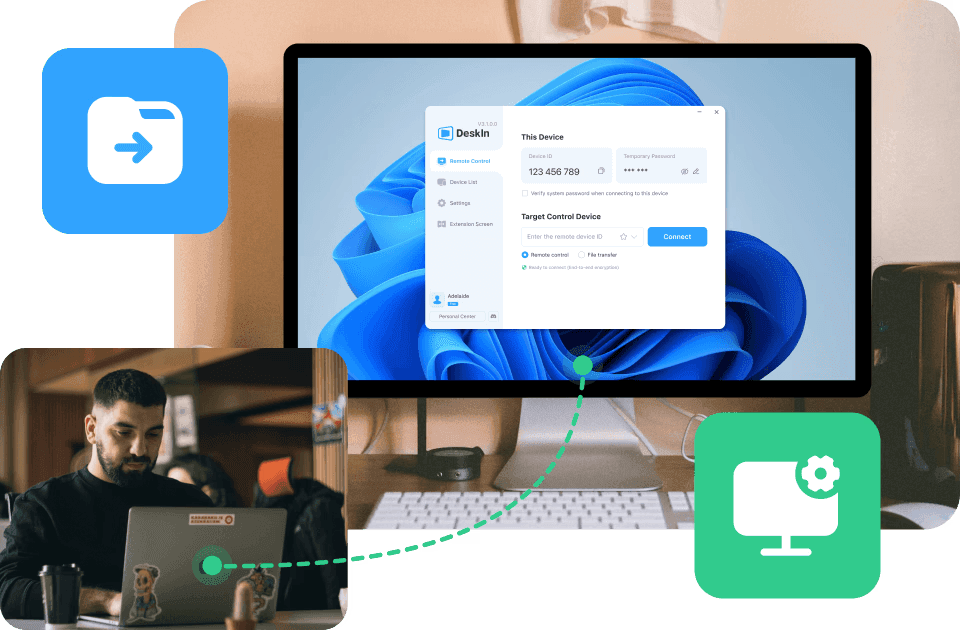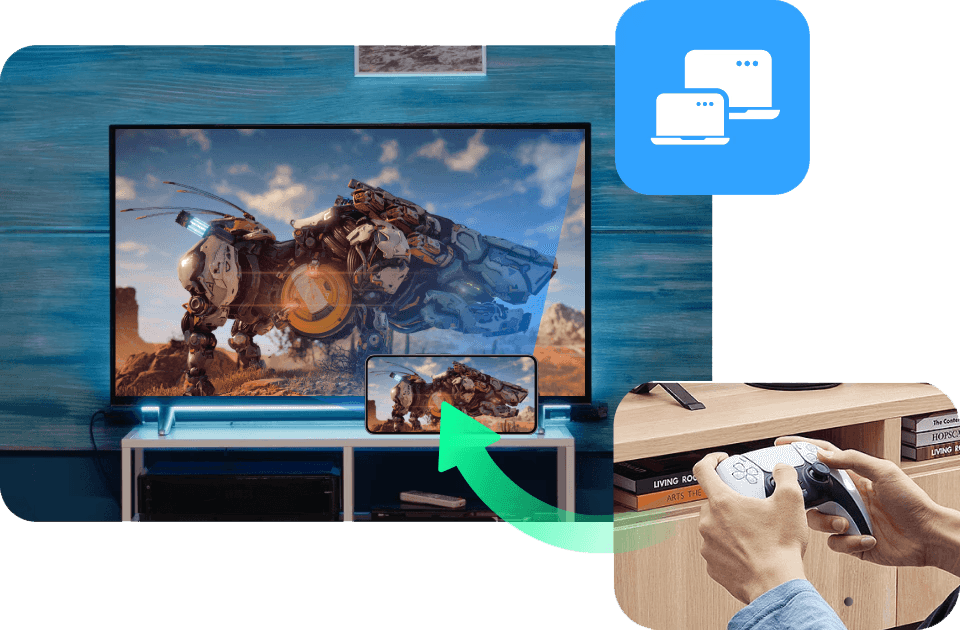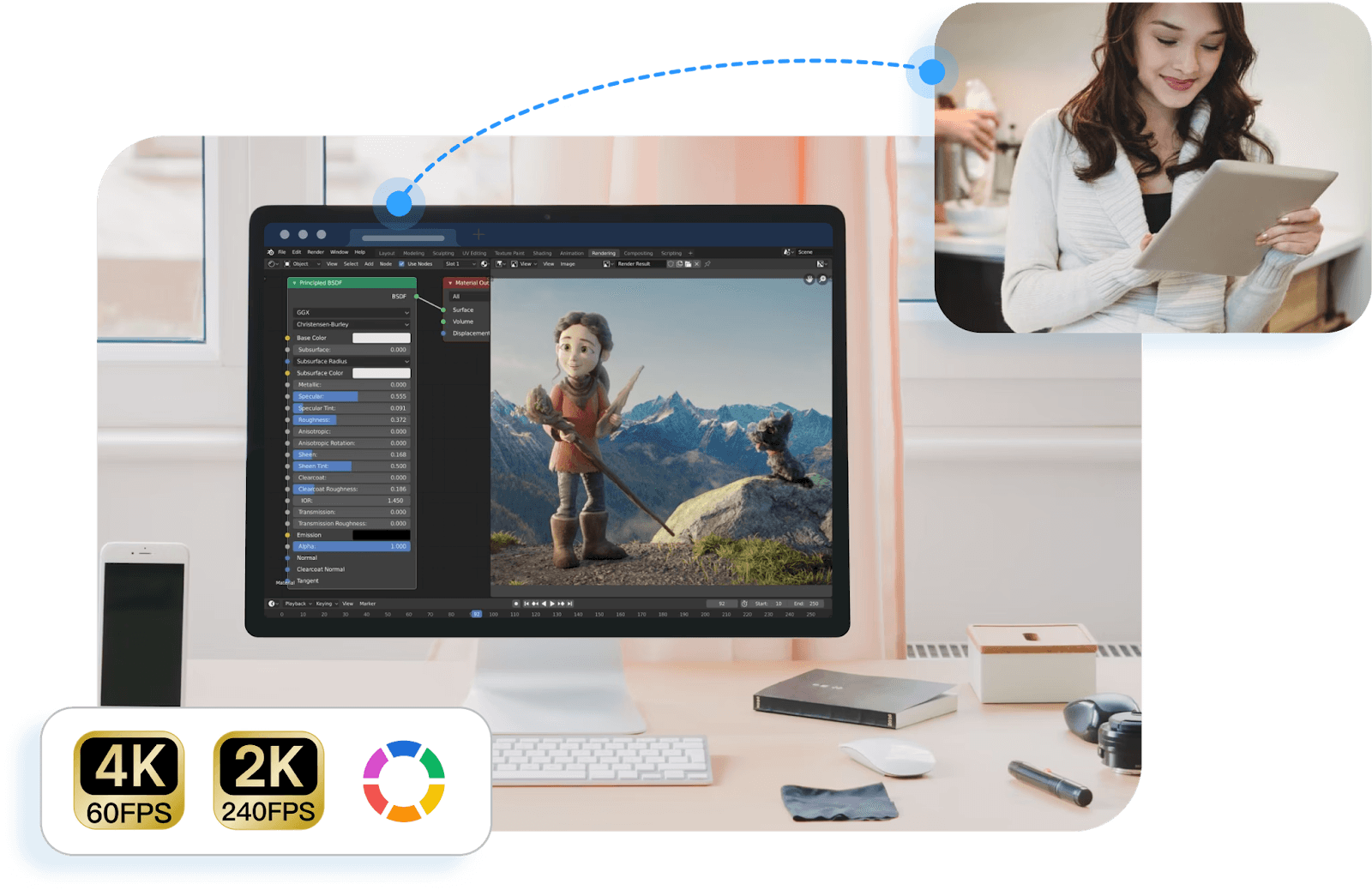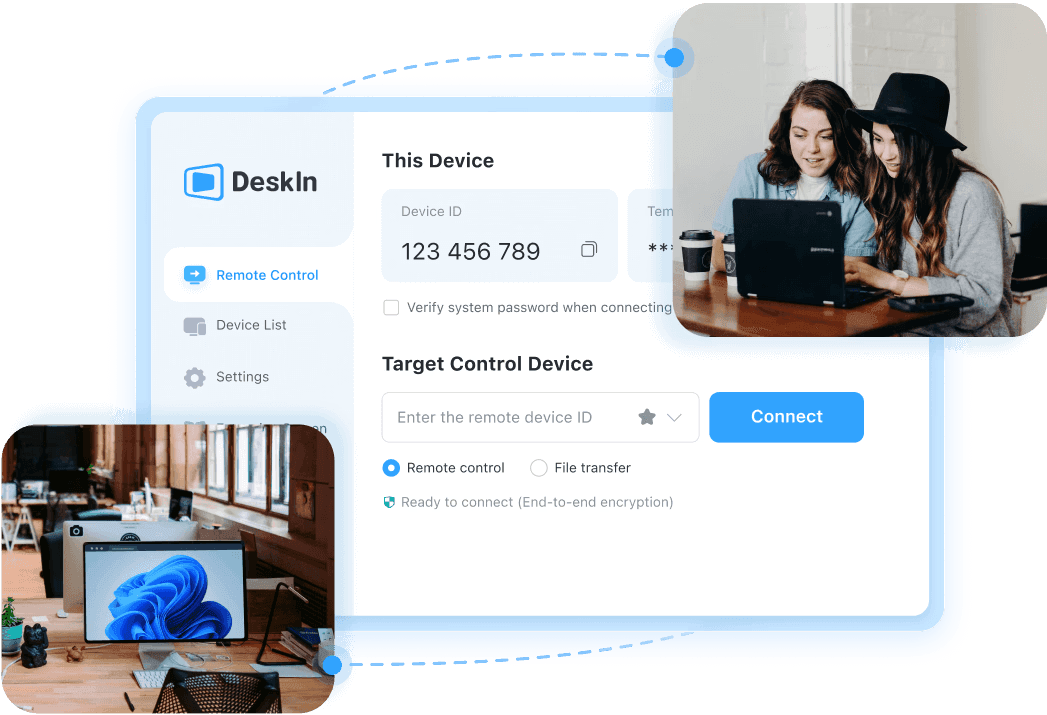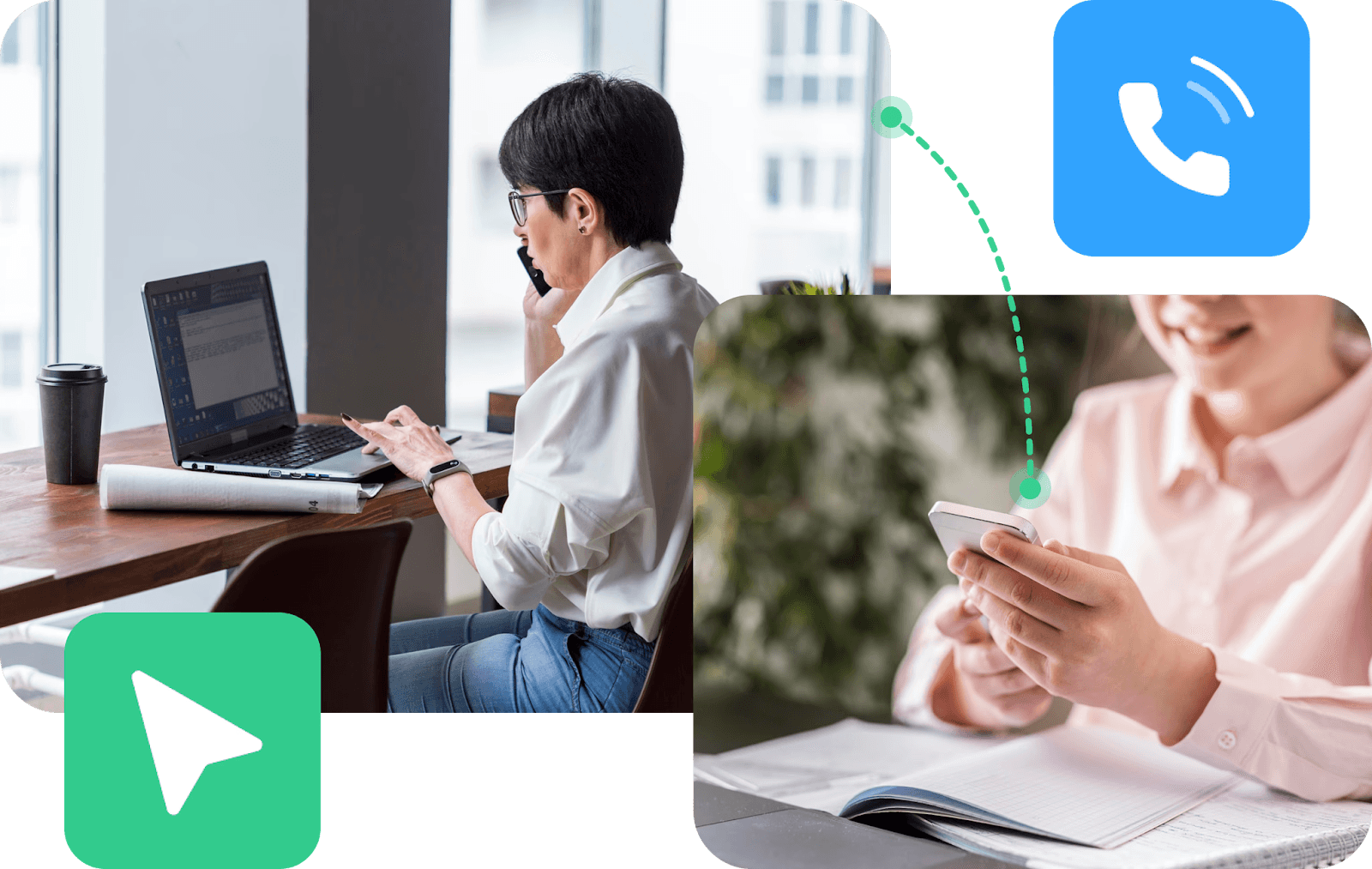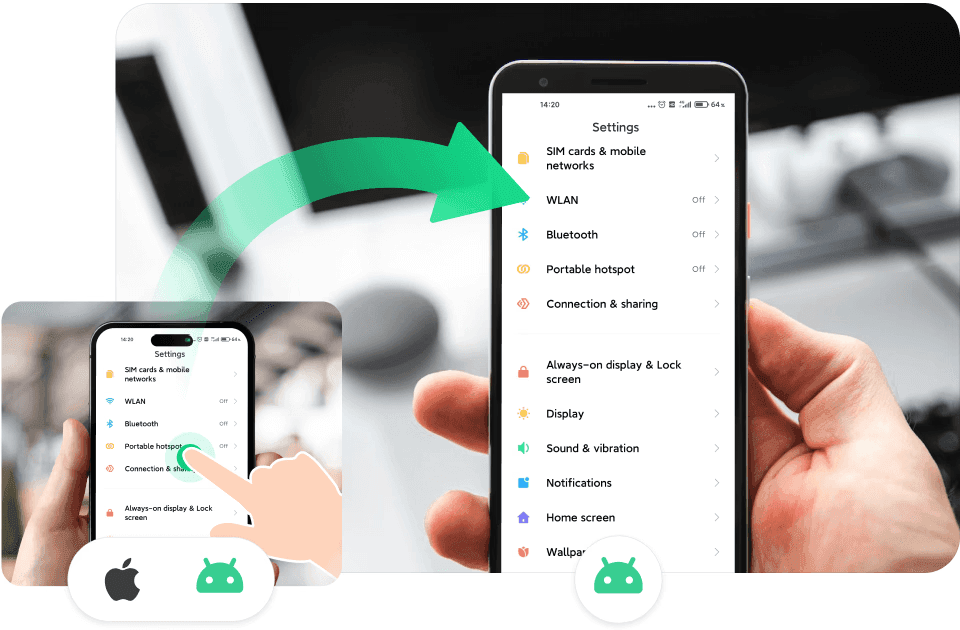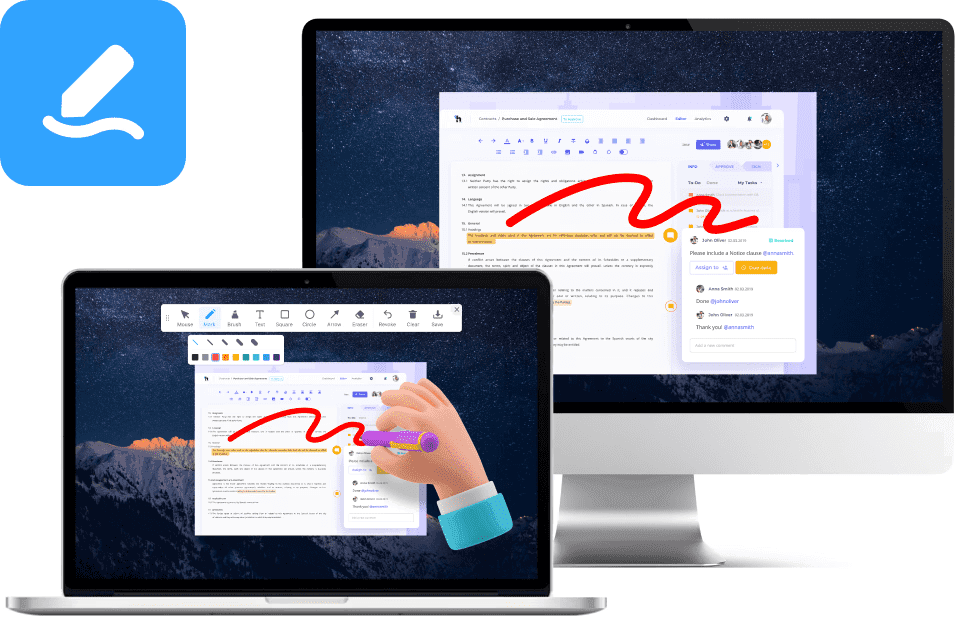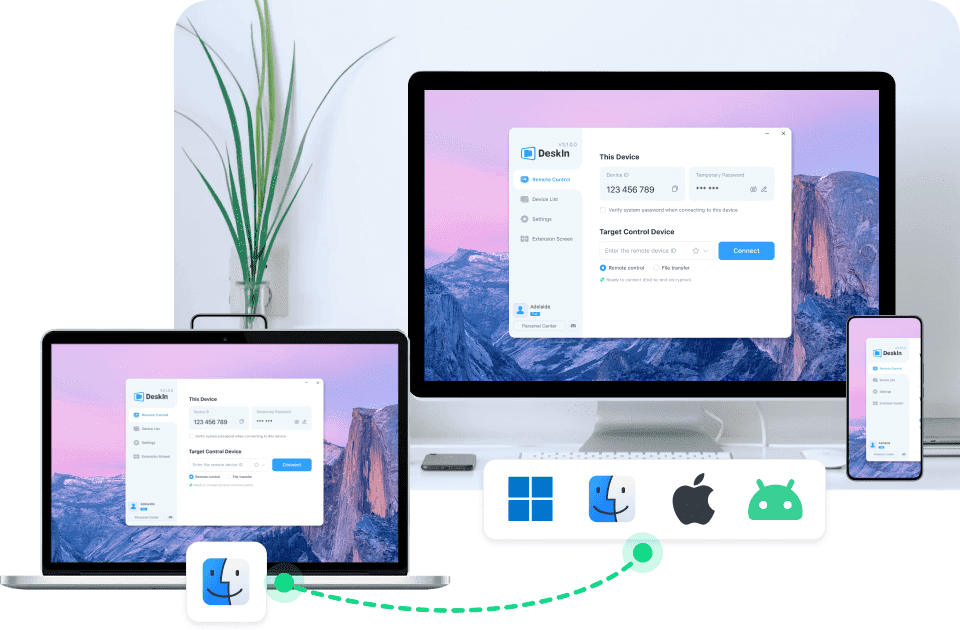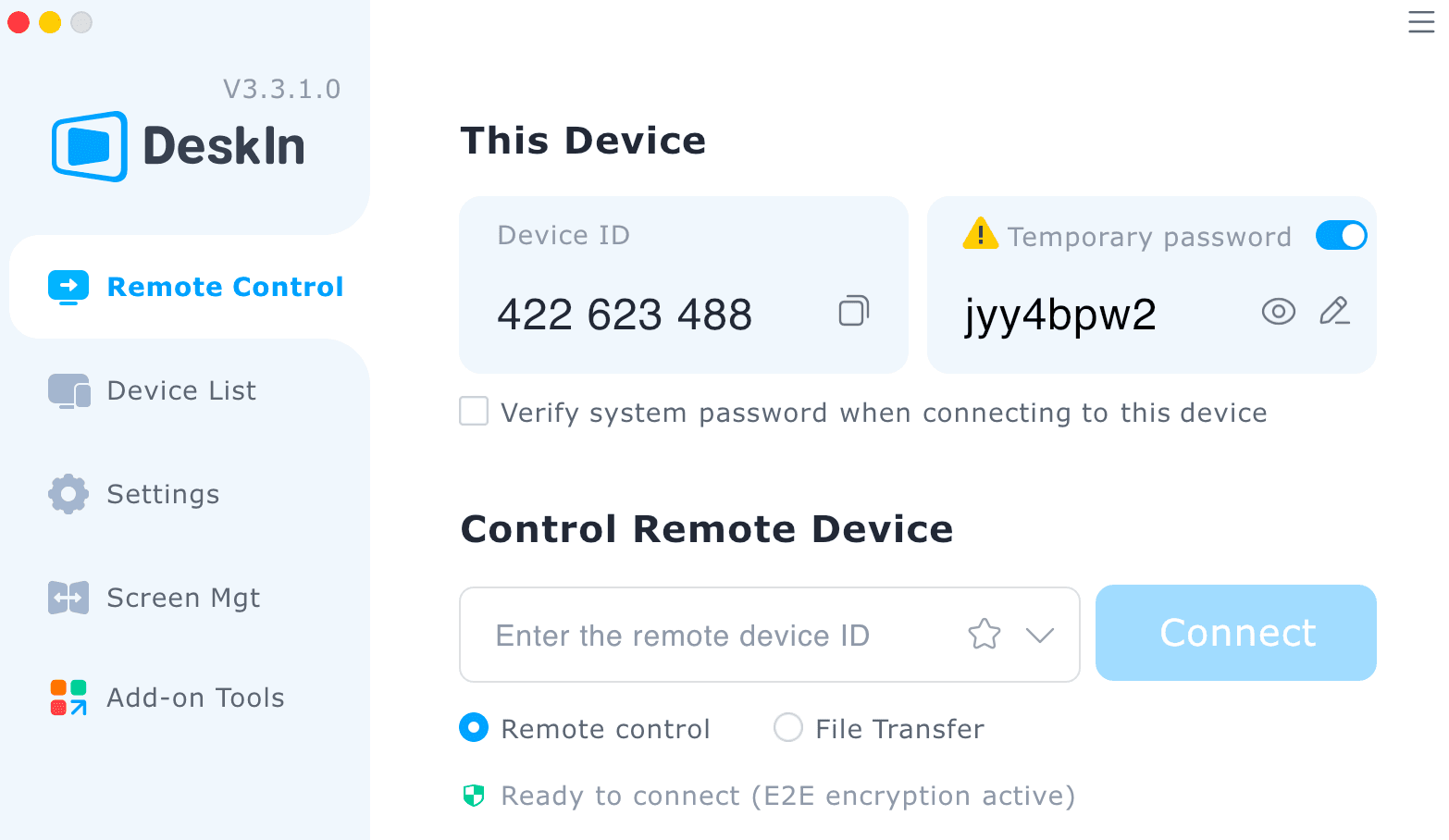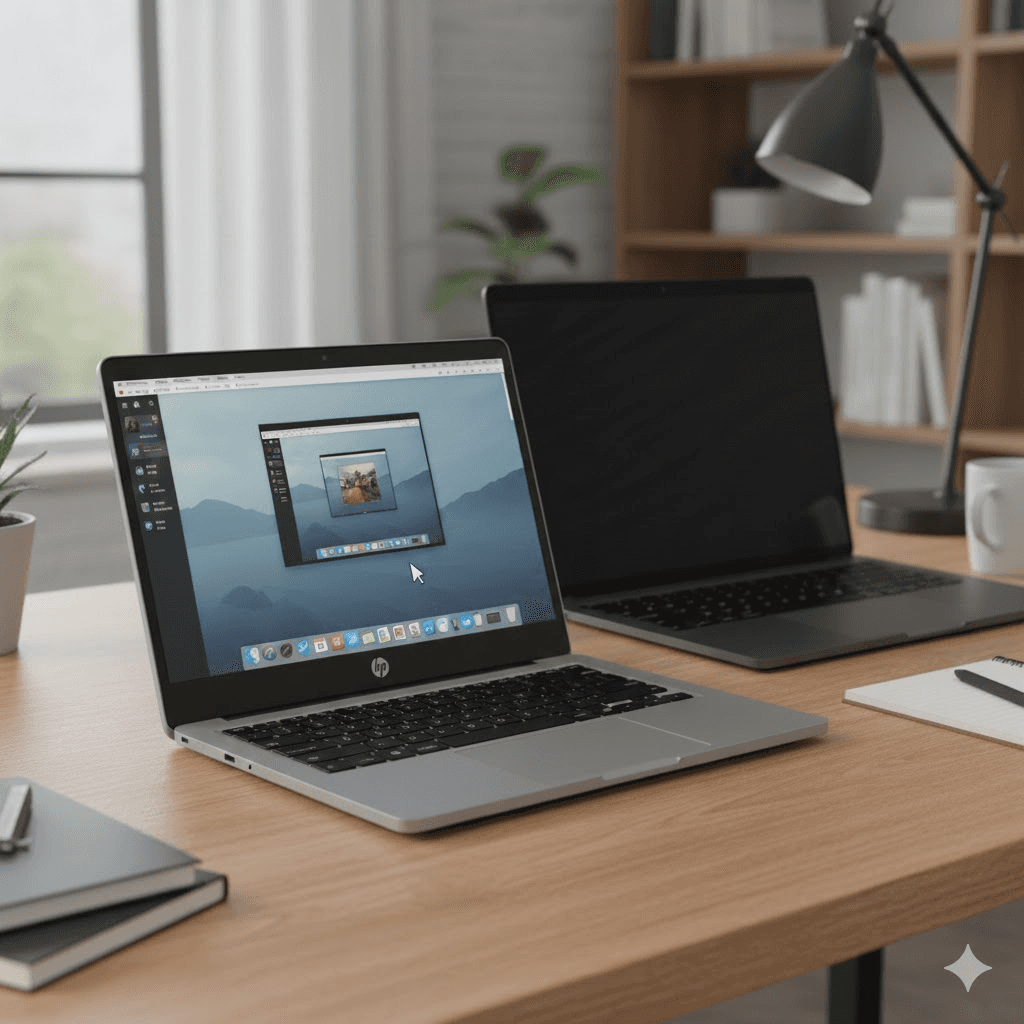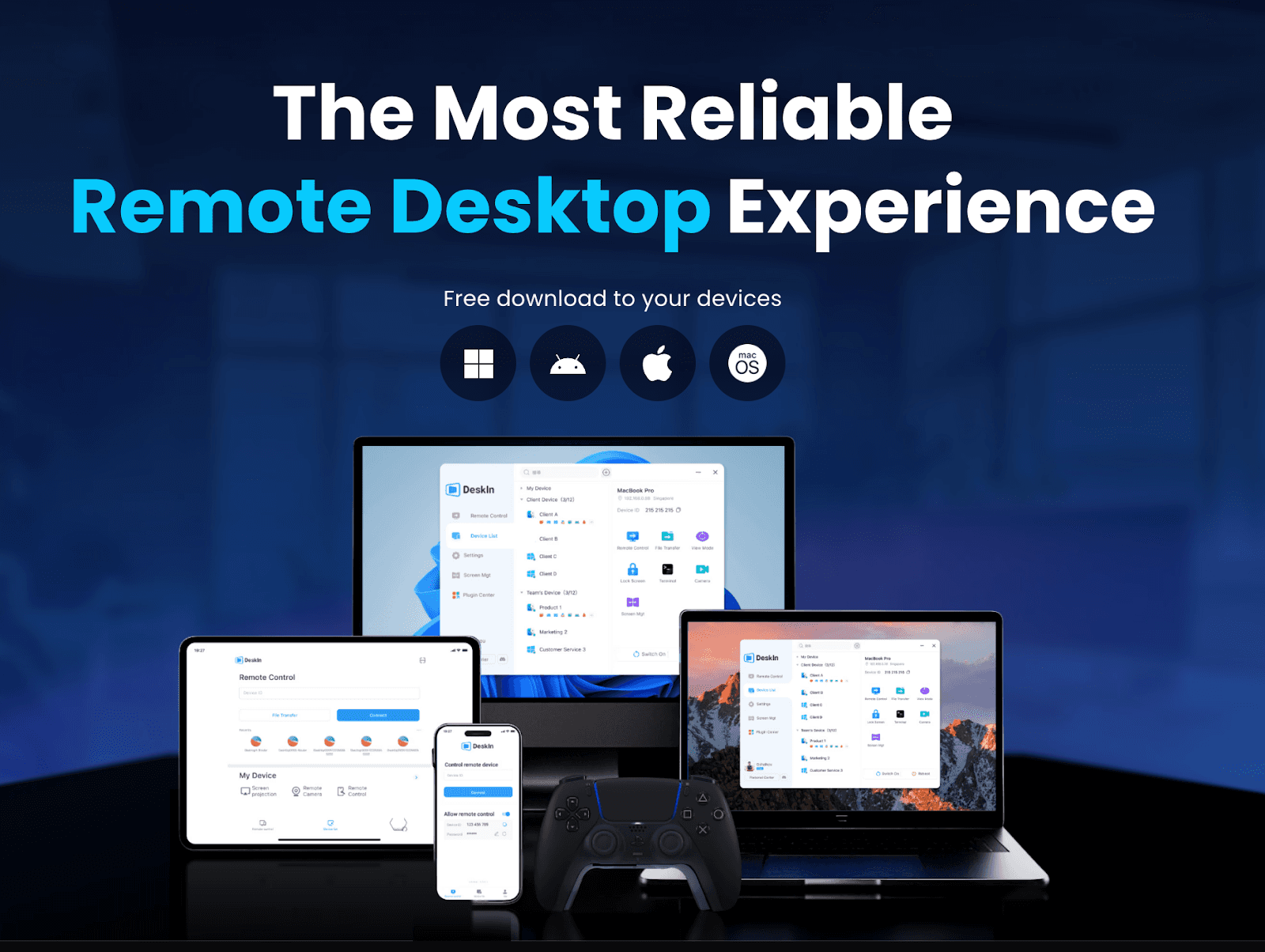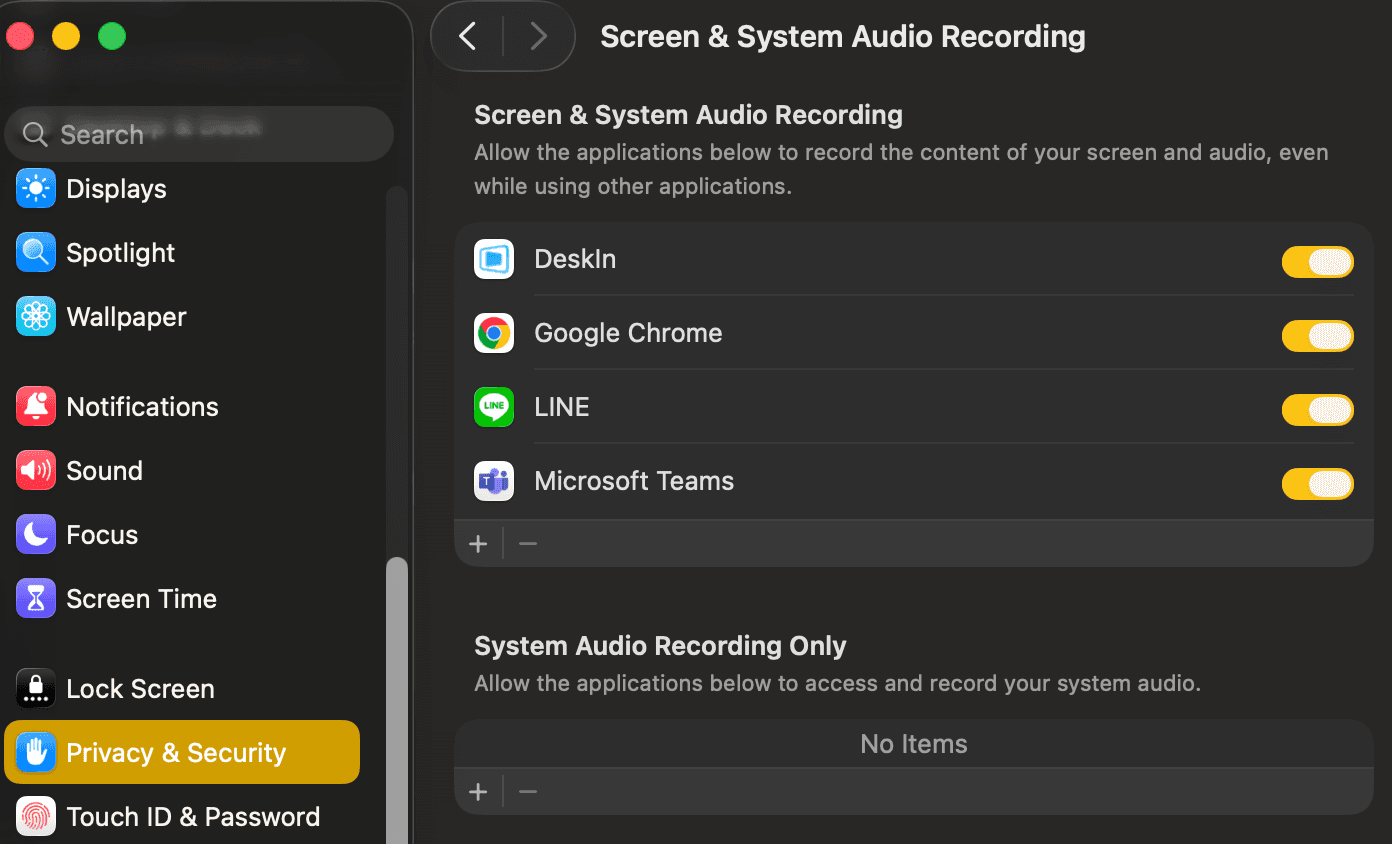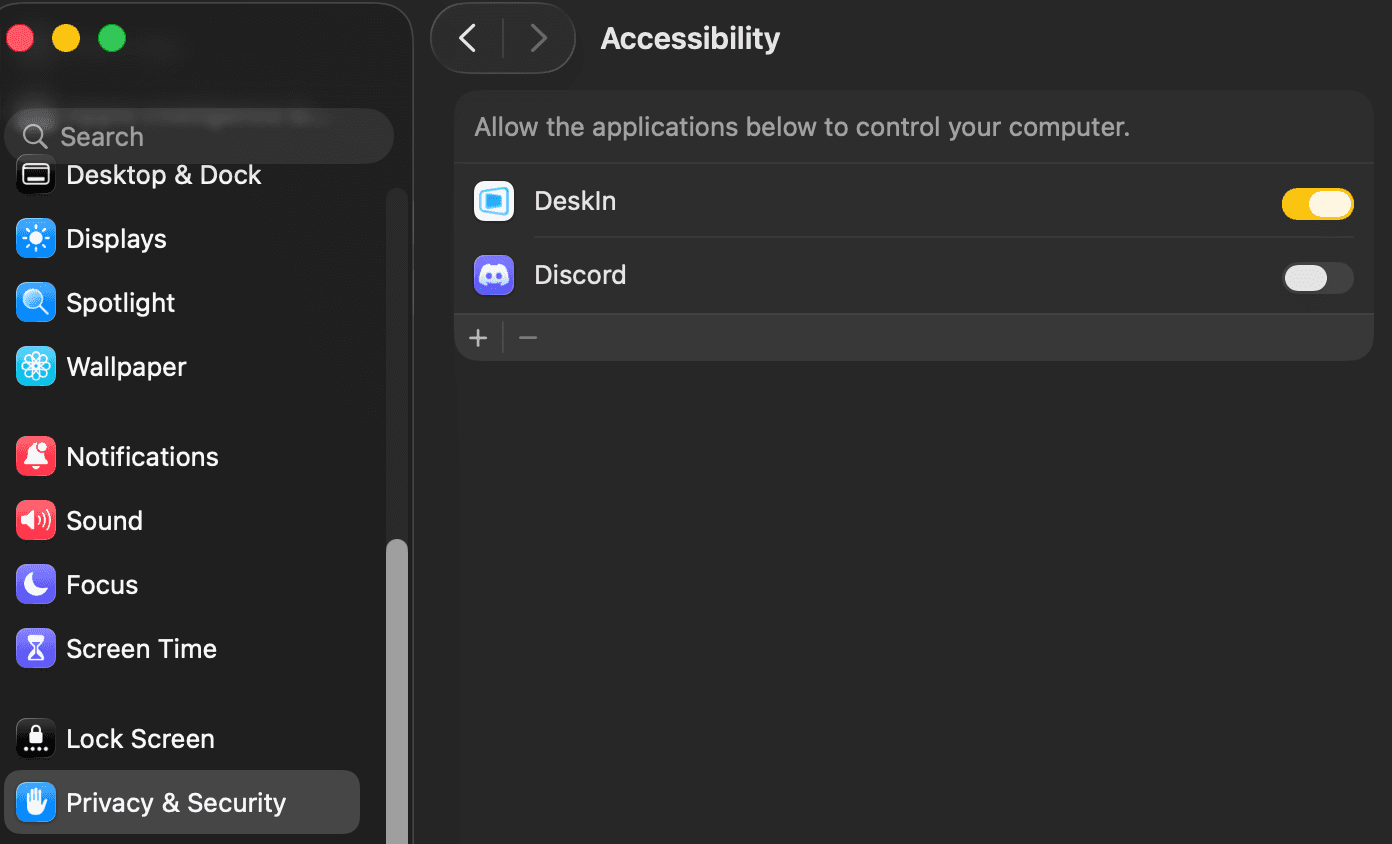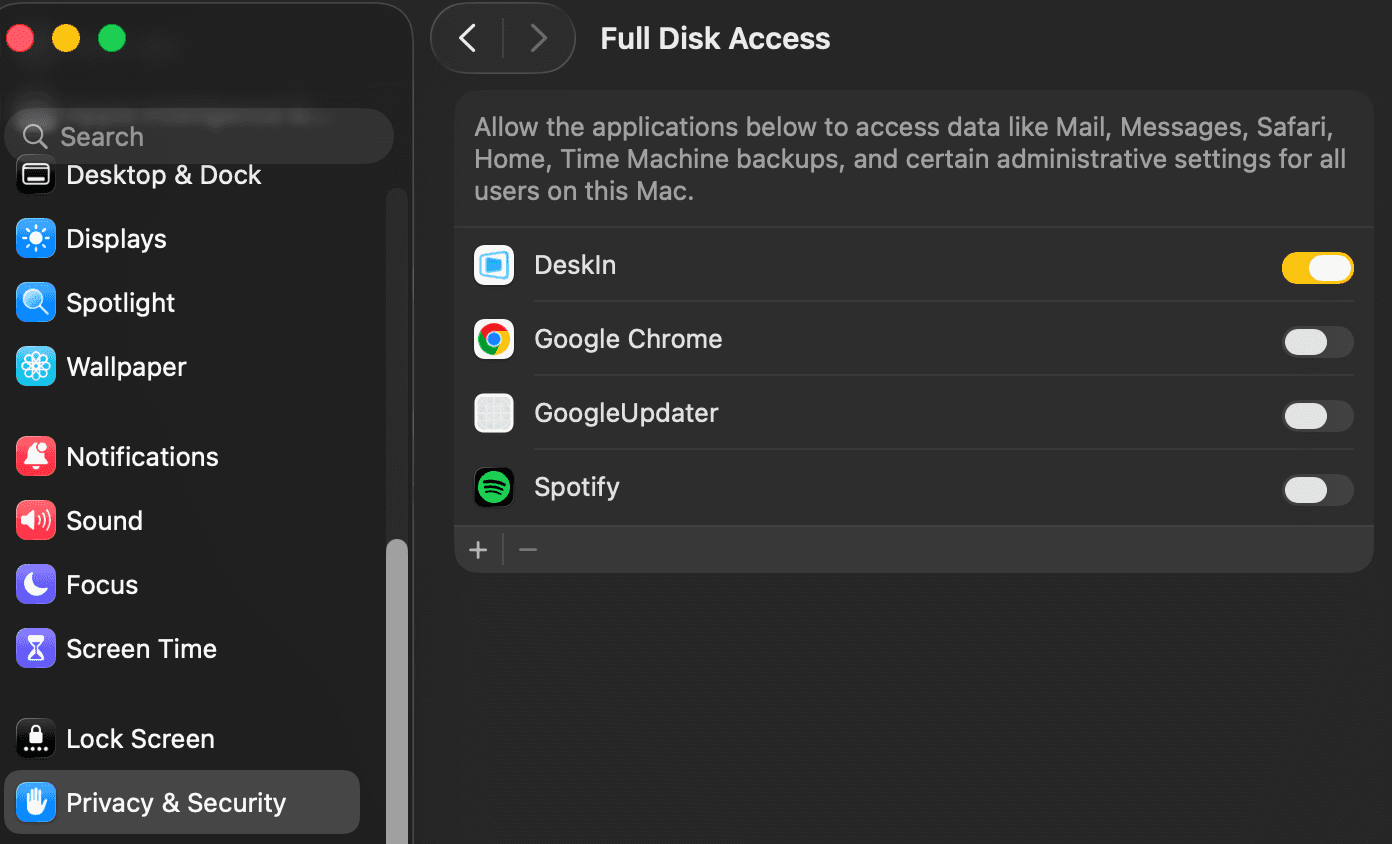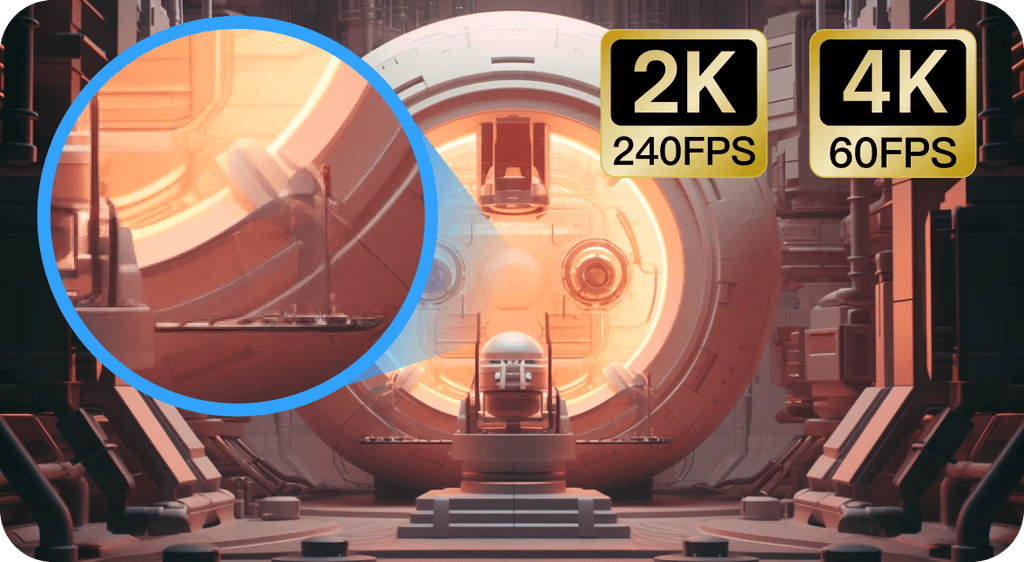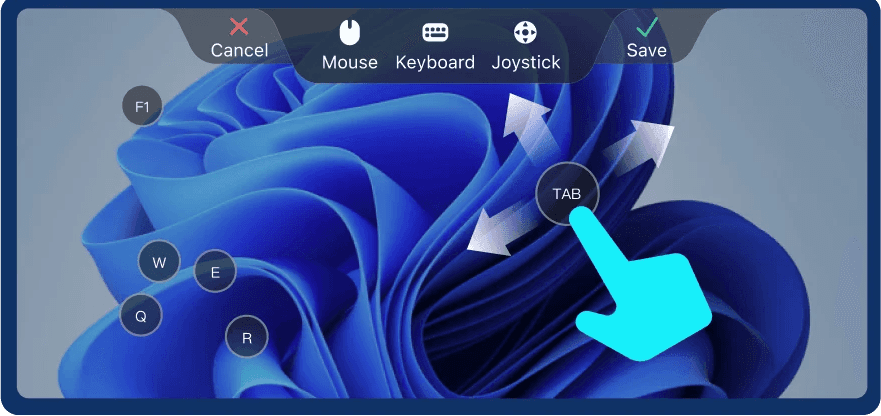Microsoft Remote Desktop Sẽ Ngừng Hoạt Động: Đây là những gì bạn cần biết
Nếu bạn gần đây đã thấy tin tức về Microsoft Remote Desktop ngừng hoạt động, bạn không phải là người duy nhất tự hỏi điều gì đang xảy ra và điều đó có nghĩa là gì cho thiết lập truy cập từ xa của bạn. Những quản trị viên CNTT trên các diễn đàn và Reddit đang đặt ra cùng một câu hỏi: Microsoft có ngừng hỗ trợ Remote Desktop không? Có ứng dụng mới nào để thay thế nó không?
Sự thật là, Microsoft không kết thúc quyền truy cập Remote Desktop, nhưng họ chính thức ngừng hoạt động ứng dụng Remote Desktop (UWP) cho Windows vào ngày 27 tháng 5 năm 2025. Thay vào đó là ứng dụng Windows, một khách hàng mới, thống nhất được thiết kế để hỗ trợ các dịch vụ đám mây hiện đại như Azure Virtual Desktop và Windows 365 trên các nền tảng khác nhau.
Trong hướng dẫn này, chúng tôi sẽ phân tích những gì đang thay đổi, điều gì cần làm nếu bạn bị ảnh hưởng, cách di chuyển và liệu có những lựa chọn tốt hơn như DeskIn để có trải nghiệm mượt mà hơn không.
Tại Sao Microsoft Ngừng Hoạt Động Ứng Dụng Remote Desktop?
Như bạn đã biết, Microsoft đang ngừng Remote Desktop. Họ chính thức thông báo rằng họ sẽ ngừng hỗ trợ vào ngày 27 tháng 5 năm 2025, và gỡ bỏ ứng dụng khỏi Microsoft Store. Điều này áp dụng cho cả người dùng Windows 10 và Windows 11 đã phụ thuộc vào khách hàng UWP để truy cập từ xa. Vậy, tại sao lại có sự thay đổi này?
Microsoft không từ bỏ công nghệ Remote Desktop, mà thay vào đó đang chuyển đổi người dùng sang ứng dụng Windows mới. Sự thay đổi này là một phần của chiến lược lớn hơn nhằm hợp nhất truy cập từ xa dưới một nền tảng có thể hỗ trợ tốt hơn cho các dịch vụ đám mây hiện đại như:
Azure Virtual Desktop
Windows 365
Các chương trình RemoteApp
Màn hình dựa trên phiên
Tích hợp Cloud PC
Khác với ứng dụng Remote Desktop cũ, ứng dụng Windows mới mang đến tính tương thích đa nền tảng, giao diện người dùng hiện đại, và hiệu suất tốt hơn trên Windows, macOS, iOS, Android, và cả trình duyệt web.
Kể cả những người dùng Mac đang tự hỏi liệu họ có thể sử dụng Microsoft Remote Desktop trên Mac nữa không sẽ thấy Ứng dụng Windows là sự thay thế chính thức, hiện có sẵn trong Mac App Store với đầy đủ hỗ trợ cho các kết nối từ xa đến các máy tính Windows và dịch vụ đám mây. Tóm lại, Microsoft đang ngừng hoạt động ứng dụng cũ để tinh giản hệ sinh thái của mình, đơn giản hóa quản lý CNTT, và cung cấp một giải pháp remote desktop an toàn, linh hoạt hơn cho tương lai.
Gặp Gỡ Sự Thay Thế: Ứng Dụng Windows Mới
Khi Microsoft chính thức ngừng hoạt động ứng dụng Remote Desktop cũ, người dùng hiện được khuyến khích chuyển sang sự thay thế chính thức của nó — ứng dụng Windows. Được thiết kế như một giải pháp truy cập từ xa hiện đại và thống nhất, ứng dụng Windows mang đến trải nghiệm tốt hơn cho cả người dùng cá nhân và doanh nghiệp.
Khách hàng Remote Desktop Ứng Dụng Windows cung cấp quyền truy cập đầy đủ vào các máy tính Windows vật lý, máy tính để bàn ảo và các môi trường đám mây như Azure Virtual Desktop và Windows 365. Dù bạn đang sử dụng Windows 10, Windows 11, macOS, iOS, Android, hay thậm chí là trình duyệt web, ứng dụng Windows đảm bảo bạn có thể kết nối với tài nguyên của mình một cách mượt mà. Bạn có thể dễ dàng tìm thấy ứng dụng Windows được tải xuống trong Microsoft Store hoặc qua tài liệu chính thức của Microsoft.

📌 Mẹo: Muốn tìm hiểu thêm về cách hoạt động và tại sao điều đó quan trọng? Hãy xem hướng dẫn đầy đủ của chúng tôi dưới đây.
Một Lựa Chọn Tốt Hơn cho Remote Desktop: DeskIn
Trong khi Microsoft khuyến khích người dùng áp dụng Remote Desktop hoặc Ứng Dụng Windows như một sự thay thế cho ứng dụng Remote Desktop đang ngừng hoạt động, điều đó có thể không phải là giải pháp lý tưởng cho mọi người. Dù bạn đang tìm kiếm một cài đặt dễ dàng, tính tương thích rộng hơn, hay các tính năng linh hoạt hơn, có một lựa chọn mạnh mẽ đáng để khám phá — DeskIn.
DeskIn nổi bật với thiết kế nhẹ, giao diện trực quan và hỗ trợ đa nền tảng xuất sắc. Khác với Ứng Dụng Windows, DeskIn hoạt động mượt mà trên Windows, macOS, Android, iOS, và thậm chí cả các mạng băng thông thấp — mà không cần cấu hình phức tạp hoặc tích hợp dịch vụ đám mây. Nó hỗ trợ điều khiển màn hình thời gian thực, chuyển tập tin từ xa, đồng bộ clipboard, xem trên nhiều màn hình, và nhiều hơn nữa, khiến nó trở thành một lựa chọn tuyệt vời cho cả sử dụng cá nhân và doanh nghiệp.
DeskIn chỉ cần một vài bước đơn giản để hoàn tất mọi thứ. Dưới đây là hướng dẫn vận hành dành cho bạn.
Bước 1. Truy cập website chính thức và nhấp vào nút ở trên để tải xuống và cài đặt DeskIn trên cả thiết bị từ xa và thiết bị mục tiêu của bạn.
Bước 2. Tạo hoặc đăng nhập vào tài khoản DeskIn của bạn trên cả hai thiết bị. Sau đó, kiểm tra "ID thiết bị" và "mật khẩu" trên máy tính mục tiêu.
Bước 3. Sử dụng thông tin thiết bị để kết nối máy tính từ xa của bạn ngay lập tức với MacBook, iPhone hoặc điện thoại Android của bạn. Khi đã hoàn tất, bạn có thể dễ dàng truy cập máy tính Windows của bạn từ các thiết bị khác!

Câu Hỏi Thường Gặp Về Việc Remote Desktop Ngừng Hoạt Động
Liệu Remote Desktop vẫn hoạt động sau ngày 27 tháng 5 năm 2025 không?
Không, sau ngày 27 tháng 5 năm 2025, Microsoft sẽ chính thức ngừng hỗ trợ cho ứng dụng Remote Desktop cũ. Những người dùng phụ thuộc vào ứng dụng cũ này sẽ không còn nhận được bản cập nhật hoặc bản vá bảo mật, và ứng dụng có thể ngừng hoạt động đúng cách. Microsoft khuyến khích người dùng chuyển sang Ứng Dụng Windows mới để tiếp tục truy cập các tính năng và dịch vụ remote desktop.
Ứng Dụng Windows có hoạt động trên Windows 10 và 11 không?
Vâng, Ứng Dụng Windows hoàn toàn tương thích với Windows 10 và Windows 11. Đây là giải pháp remote desktop được khuyến nghị cho người dùng trên các hệ điều hành này. Ứng dụng cung cấp tích hợp tốt hơn với các dịch vụ đám mây như Windows 365 và Azure Virtual Desktop, cùng với tính tương thích đa nền tảng và các tính năng bảo mật được nâng cao.
Suy Nghĩ Cuối Cùng
Khi việc di chuyển sang Ứng Dụng Windows là khuyến nghị chính thức từ Microsoft khi họ loại bỏ ứng dụng Remote Desktop cũ, DeskIn xuất hiện như một lựa chọn mạnh mẽ và linh hoạt hơn. Nếu bạn đang tìm kiếm sự tương thích tốt hơn, cài đặt đơn giản hơn và nhiều tính năng hơn, DeskIn cung cấp một giải pháp đáng tin cậy hơn mà có thể phù hợp hơn với nhu cầu của bạn, đặc biệt là cho các tình huống remote desktop đa dạng.
Đối với những người dùng lo ngại về những thay đổi sắp tới, việc chuyển sang DeskIn ngay bây giờ có thể đảm bảo trải nghiệm mượt mà, không bị gián đoạn với nhiều lựa chọn hơn cho cả truy cập từ xa cá nhân và chuyên nghiệp.
Microsoft Remote Desktop Sẽ Ngừng Hoạt Động: Đây là những gì bạn cần biết
Nếu bạn gần đây đã thấy tin tức về Microsoft Remote Desktop ngừng hoạt động, bạn không phải là người duy nhất tự hỏi điều gì đang xảy ra và điều đó có nghĩa là gì cho thiết lập truy cập từ xa của bạn. Những quản trị viên CNTT trên các diễn đàn và Reddit đang đặt ra cùng một câu hỏi: Microsoft có ngừng hỗ trợ Remote Desktop không? Có ứng dụng mới nào để thay thế nó không?
Sự thật là, Microsoft không kết thúc quyền truy cập Remote Desktop, nhưng họ chính thức ngừng hoạt động ứng dụng Remote Desktop (UWP) cho Windows vào ngày 27 tháng 5 năm 2025. Thay vào đó là ứng dụng Windows, một khách hàng mới, thống nhất được thiết kế để hỗ trợ các dịch vụ đám mây hiện đại như Azure Virtual Desktop và Windows 365 trên các nền tảng khác nhau.
Trong hướng dẫn này, chúng tôi sẽ phân tích những gì đang thay đổi, điều gì cần làm nếu bạn bị ảnh hưởng, cách di chuyển và liệu có những lựa chọn tốt hơn như DeskIn để có trải nghiệm mượt mà hơn không.
Tại Sao Microsoft Ngừng Hoạt Động Ứng Dụng Remote Desktop?
Như bạn đã biết, Microsoft đang ngừng Remote Desktop. Họ chính thức thông báo rằng họ sẽ ngừng hỗ trợ vào ngày 27 tháng 5 năm 2025, và gỡ bỏ ứng dụng khỏi Microsoft Store. Điều này áp dụng cho cả người dùng Windows 10 và Windows 11 đã phụ thuộc vào khách hàng UWP để truy cập từ xa. Vậy, tại sao lại có sự thay đổi này?
Microsoft không từ bỏ công nghệ Remote Desktop, mà thay vào đó đang chuyển đổi người dùng sang ứng dụng Windows mới. Sự thay đổi này là một phần của chiến lược lớn hơn nhằm hợp nhất truy cập từ xa dưới một nền tảng có thể hỗ trợ tốt hơn cho các dịch vụ đám mây hiện đại như:
Azure Virtual Desktop
Windows 365
Các chương trình RemoteApp
Màn hình dựa trên phiên
Tích hợp Cloud PC
Khác với ứng dụng Remote Desktop cũ, ứng dụng Windows mới mang đến tính tương thích đa nền tảng, giao diện người dùng hiện đại, và hiệu suất tốt hơn trên Windows, macOS, iOS, Android, và cả trình duyệt web.
Kể cả những người dùng Mac đang tự hỏi liệu họ có thể sử dụng Microsoft Remote Desktop trên Mac nữa không sẽ thấy Ứng dụng Windows là sự thay thế chính thức, hiện có sẵn trong Mac App Store với đầy đủ hỗ trợ cho các kết nối từ xa đến các máy tính Windows và dịch vụ đám mây. Tóm lại, Microsoft đang ngừng hoạt động ứng dụng cũ để tinh giản hệ sinh thái của mình, đơn giản hóa quản lý CNTT, và cung cấp một giải pháp remote desktop an toàn, linh hoạt hơn cho tương lai.
Gặp Gỡ Sự Thay Thế: Ứng Dụng Windows Mới
Khi Microsoft chính thức ngừng hoạt động ứng dụng Remote Desktop cũ, người dùng hiện được khuyến khích chuyển sang sự thay thế chính thức của nó — ứng dụng Windows. Được thiết kế như một giải pháp truy cập từ xa hiện đại và thống nhất, ứng dụng Windows mang đến trải nghiệm tốt hơn cho cả người dùng cá nhân và doanh nghiệp.
Khách hàng Remote Desktop Ứng Dụng Windows cung cấp quyền truy cập đầy đủ vào các máy tính Windows vật lý, máy tính để bàn ảo và các môi trường đám mây như Azure Virtual Desktop và Windows 365. Dù bạn đang sử dụng Windows 10, Windows 11, macOS, iOS, Android, hay thậm chí là trình duyệt web, ứng dụng Windows đảm bảo bạn có thể kết nối với tài nguyên của mình một cách mượt mà. Bạn có thể dễ dàng tìm thấy ứng dụng Windows được tải xuống trong Microsoft Store hoặc qua tài liệu chính thức của Microsoft.

📌 Mẹo: Muốn tìm hiểu thêm về cách hoạt động và tại sao điều đó quan trọng? Hãy xem hướng dẫn đầy đủ của chúng tôi dưới đây.
Một Lựa Chọn Tốt Hơn cho Remote Desktop: DeskIn
Trong khi Microsoft khuyến khích người dùng áp dụng Remote Desktop hoặc Ứng Dụng Windows như một sự thay thế cho ứng dụng Remote Desktop đang ngừng hoạt động, điều đó có thể không phải là giải pháp lý tưởng cho mọi người. Dù bạn đang tìm kiếm một cài đặt dễ dàng, tính tương thích rộng hơn, hay các tính năng linh hoạt hơn, có một lựa chọn mạnh mẽ đáng để khám phá — DeskIn.
DeskIn nổi bật với thiết kế nhẹ, giao diện trực quan và hỗ trợ đa nền tảng xuất sắc. Khác với Ứng Dụng Windows, DeskIn hoạt động mượt mà trên Windows, macOS, Android, iOS, và thậm chí cả các mạng băng thông thấp — mà không cần cấu hình phức tạp hoặc tích hợp dịch vụ đám mây. Nó hỗ trợ điều khiển màn hình thời gian thực, chuyển tập tin từ xa, đồng bộ clipboard, xem trên nhiều màn hình, và nhiều hơn nữa, khiến nó trở thành một lựa chọn tuyệt vời cho cả sử dụng cá nhân và doanh nghiệp.
DeskIn chỉ cần một vài bước đơn giản để hoàn tất mọi thứ. Dưới đây là hướng dẫn vận hành dành cho bạn.
Bước 1. Truy cập website chính thức và nhấp vào nút ở trên để tải xuống và cài đặt DeskIn trên cả thiết bị từ xa và thiết bị mục tiêu của bạn.
Bước 2. Tạo hoặc đăng nhập vào tài khoản DeskIn của bạn trên cả hai thiết bị. Sau đó, kiểm tra "ID thiết bị" và "mật khẩu" trên máy tính mục tiêu.
Bước 3. Sử dụng thông tin thiết bị để kết nối máy tính từ xa của bạn ngay lập tức với MacBook, iPhone hoặc điện thoại Android của bạn. Khi đã hoàn tất, bạn có thể dễ dàng truy cập máy tính Windows của bạn từ các thiết bị khác!

Câu Hỏi Thường Gặp Về Việc Remote Desktop Ngừng Hoạt Động
Liệu Remote Desktop vẫn hoạt động sau ngày 27 tháng 5 năm 2025 không?
Không, sau ngày 27 tháng 5 năm 2025, Microsoft sẽ chính thức ngừng hỗ trợ cho ứng dụng Remote Desktop cũ. Những người dùng phụ thuộc vào ứng dụng cũ này sẽ không còn nhận được bản cập nhật hoặc bản vá bảo mật, và ứng dụng có thể ngừng hoạt động đúng cách. Microsoft khuyến khích người dùng chuyển sang Ứng Dụng Windows mới để tiếp tục truy cập các tính năng và dịch vụ remote desktop.
Ứng Dụng Windows có hoạt động trên Windows 10 và 11 không?
Vâng, Ứng Dụng Windows hoàn toàn tương thích với Windows 10 và Windows 11. Đây là giải pháp remote desktop được khuyến nghị cho người dùng trên các hệ điều hành này. Ứng dụng cung cấp tích hợp tốt hơn với các dịch vụ đám mây như Windows 365 và Azure Virtual Desktop, cùng với tính tương thích đa nền tảng và các tính năng bảo mật được nâng cao.
Suy Nghĩ Cuối Cùng
Khi việc di chuyển sang Ứng Dụng Windows là khuyến nghị chính thức từ Microsoft khi họ loại bỏ ứng dụng Remote Desktop cũ, DeskIn xuất hiện như một lựa chọn mạnh mẽ và linh hoạt hơn. Nếu bạn đang tìm kiếm sự tương thích tốt hơn, cài đặt đơn giản hơn và nhiều tính năng hơn, DeskIn cung cấp một giải pháp đáng tin cậy hơn mà có thể phù hợp hơn với nhu cầu của bạn, đặc biệt là cho các tình huống remote desktop đa dạng.
Đối với những người dùng lo ngại về những thay đổi sắp tới, việc chuyển sang DeskIn ngay bây giờ có thể đảm bảo trải nghiệm mượt mà, không bị gián đoạn với nhiều lựa chọn hơn cho cả truy cập từ xa cá nhân và chuyên nghiệp.






